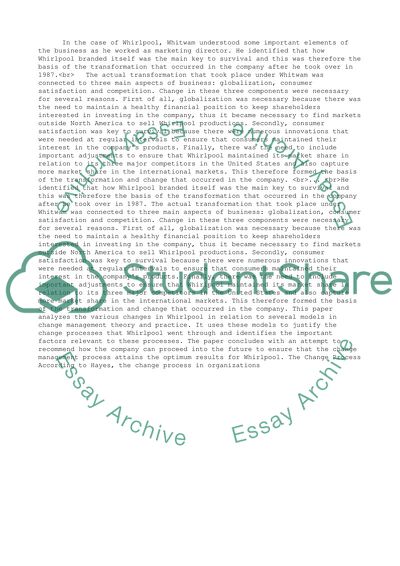Cite this document
(“Case Study Analysis in Change Management. Whirlpool Essay”, n.d.)
Retrieved de https://studentshare.org/management/1392192-case-study-analysis-in-change-management-whirlpool
Retrieved de https://studentshare.org/management/1392192-case-study-analysis-in-change-management-whirlpool
(Case Study Analysis in Change Management. Whirlpool Essay)
https://studentshare.org/management/1392192-case-study-analysis-in-change-management-whirlpool.
https://studentshare.org/management/1392192-case-study-analysis-in-change-management-whirlpool.
“Case Study Analysis in Change Management. Whirlpool Essay”, n.d. https://studentshare.org/management/1392192-case-study-analysis-in-change-management-whirlpool.


